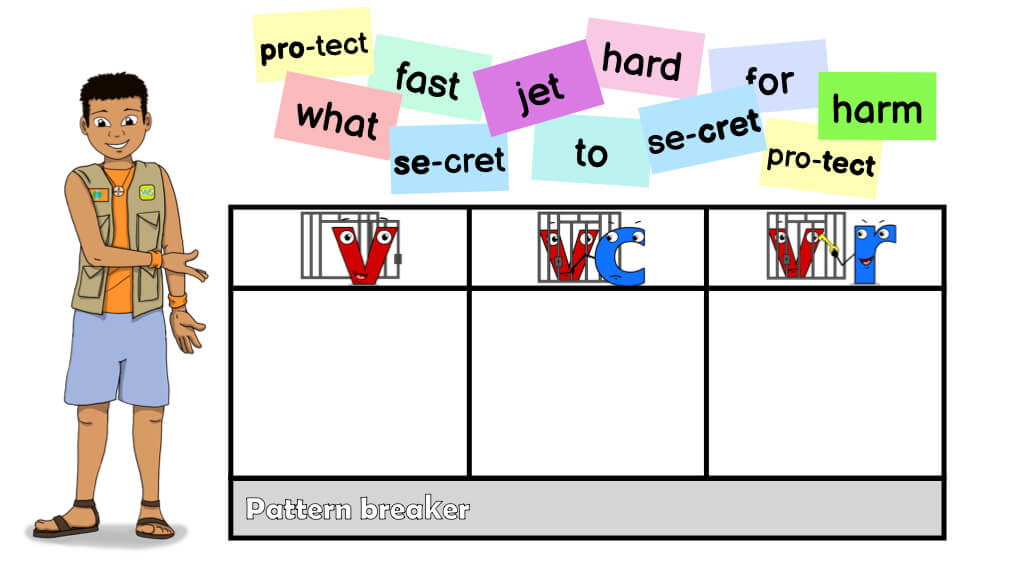Remind readers that when they can recognize open, closed, and bossy R syllables they will be able to use this skill to read longer words too.
RETURN
Activity: My Syllable Sort
- Phase 3: Full Alphabetic Course
- QU-Blend | Octopuses
- Prepare to Read

Standards
• Distinguish long, short, and r-controlled vowels when reading regularly spelled one-syllable words.
• Decode regularly spelled one-syllable words.
Reader Goals
I can identify closed, open, and bossy R syllables.
Target Words
• V: pro-test, se-cret
• VC: fast, pro-test, se-cret, jet
• VR: hard, for, harm
• Pattern Breaker: what, to